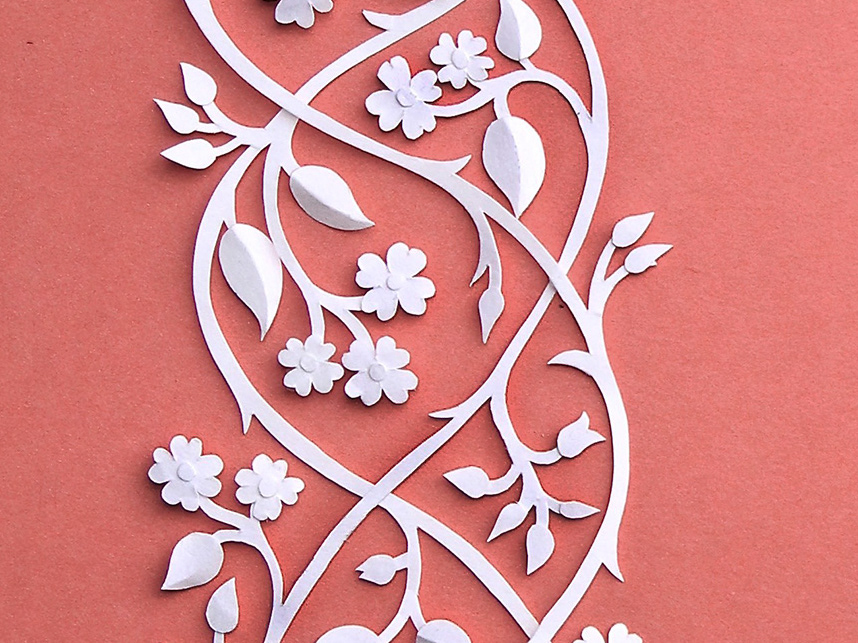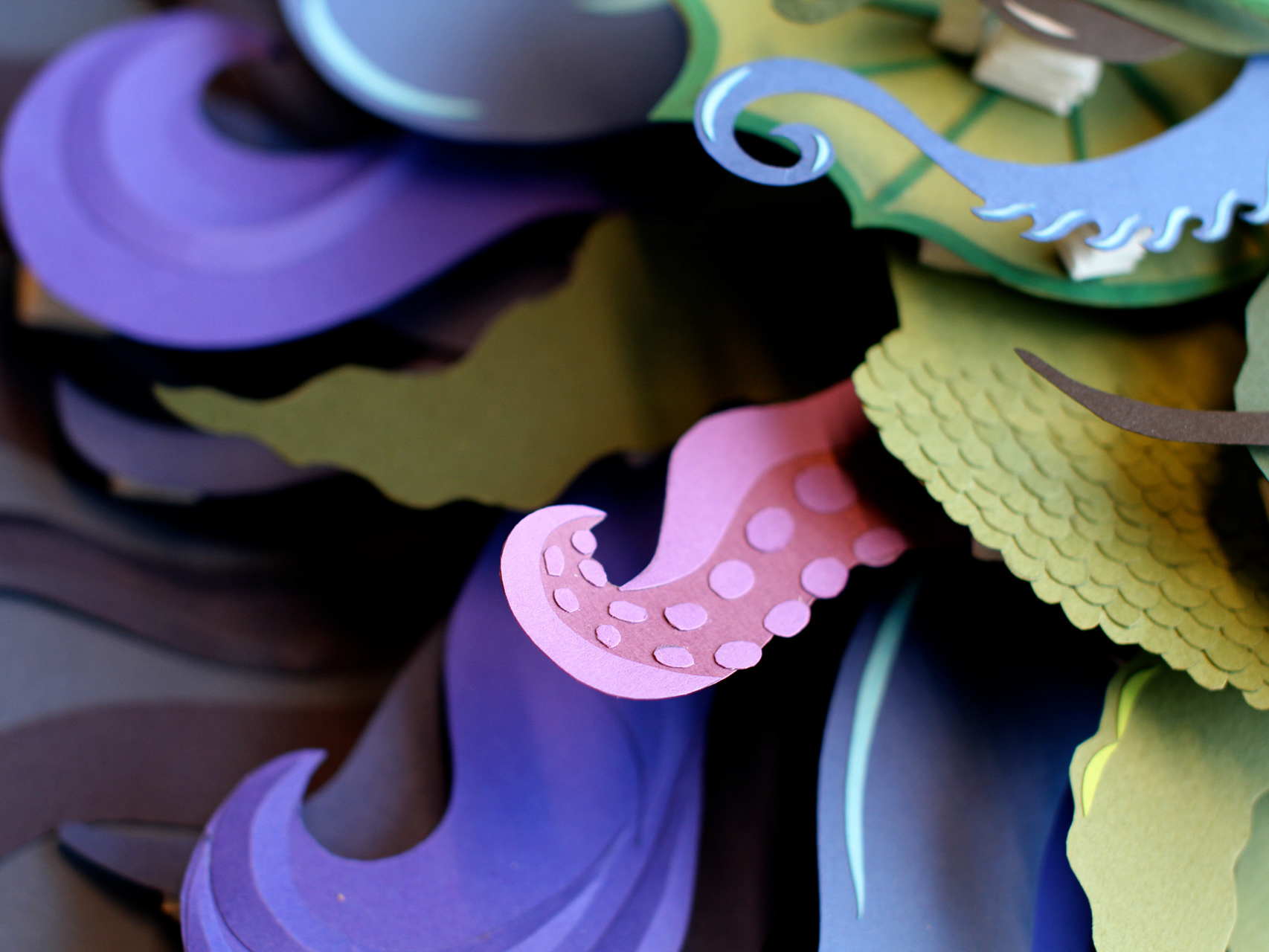In the summer of 2017, I was invited to take part in a paper art exhibition in Israel with the theme "Paper Creatures."
I chose to draw inspiration from Norse mythology and ended up portraying the goddesses Frigg and Freyja.
I chose to draw inspiration from Norse mythology and ended up portraying the goddesses Frigg and Freyja.
Frigg and Freyja are two of the most well-known goddesses in Norse mythology, and historical sources tell us that they were worshipped by Vikings throughout Scandinavia. The two share many similarities, and over time, several historians have speculated that they may have originally stemmed from a single deity. With this in mind, I still wanted to depict both, focusing on different aspects of their character.
I deliberately chose not to incorporate any Viking aesthetics into the design. Instead, I aimed to create something entirely my own, inspired by their unique qualities rather than stereotypical representations.
FRIGG
Frigg is the most powerful of all the goddesses in Norse mythology and is often associated with great wisdom and the ability to see into the future. She is the goddess of love, fate, and fertility, and is frequently connected with — and seen as a symbol of — Mother Earth. She is pure and kind, the most beautiful of the gods, and is portrayed as being just as wise — and in every way the equal — of her husband, Odin.
FRØYA
Freyja is the second most powerful goddess. Like Frigg, she is the goddess of love and fertility, but she is also the goddess of war and death. In Norse mythology, it was believed that if you died in battle, you would be received into the halls of the gods. There, you would drink all night and fight and train all day to prepare for the great final battle of the gods — Ragnarök. Ragnarök is a series of future events, including this epic battle, that will bring about the end of the world as we know it, both for gods and humans. Afterward, the world will be reborn, the surviving gods will reunite, and the earth will be repopulated by two human survivors.
The gods need warriors, and after each battle, Freyja is said to walk among the fallen on the battlefield, selecting the bravest warriors to join her in her great hall, Sessrúmnir, in Fólkvangr. The remaining half are sent to Odin’s great hall, Valhalla.
Freyja is known for owning a cloak of feathers that allows her to shape-shift into a falcon. It was in this form that she would fly over the battlefields, observing the fallen and choosing the very best to join her at her table.

